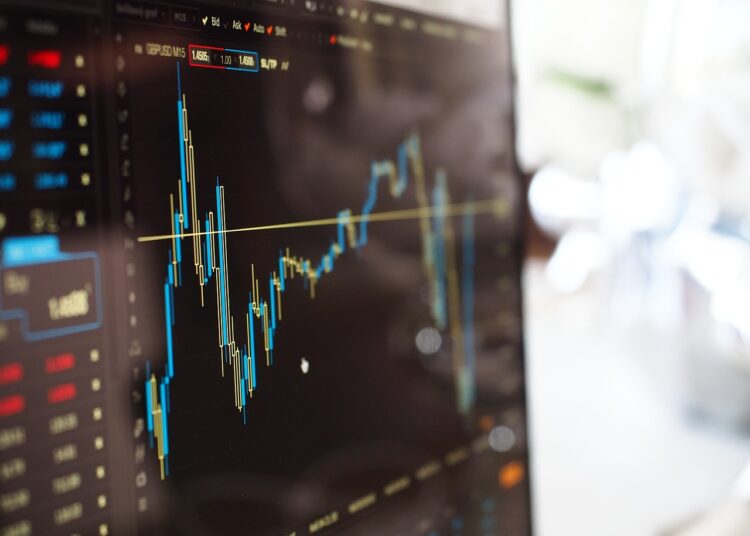Day trading has become increasingly popular over the years as more people seek to make a living through trading stocks, forex, and other financial instruments. However, it is important to note that day trading can be a risky venture, requiring skill, discipline, and the right set of tools. In this article, we will explore some of the most effective tools for day trading.
Desktop Trading Platforms
One of the most essential tools for day trading is a desktop trading platform. These platforms are software applications that allow traders to buy and sell financial instruments, view charts, track market trends, and analyze data. A good desktop trading platform should have advanced charting capabilities, real-time market data, and a customizable layout for quick access to the most important information.
Trading platforms offer a wide range of features, including automated trading, backtesting, and advanced order types to help traders stay ahead of the competition.
Mobile Trading Apps
Mobile trading apps are another essential tool for day traders who need to stay connected to the market at all times. These apps allow traders to buy and sell financial instruments, view real-time quotes, charts, and news feeds, and manage their accounts from anywhere with an internet connection.
Look for a trading app that has good reviews and offers all the features you need.
News Feeds
In day trading, staying on top of market news and events is crucial. News feeds provide traders with real-time updates on market events, economic data releases, and company announcements. This information can help traders make informed decisions about when to enter or exit a trade.
Some of the most popular news feeds for day traders include Bloomberg, CNBC, and MarketWatch. These news feeds offer a range of information on market trends, economic data, and company news, as well as expert analysis and opinions on the market.
Charting Software
Charts are an essential tool for day traders, allowing them to visualize price movements, identify trends, and spot potential trading opportunities. Good charting software should be easy to use, customizable, and provide real-time data updates.
Some popular charting software includes TradingView, eSignal, and Sierra Chart. These platforms offer a range of technical analysis tools, such as indicators and drawing tools, to help traders identify potential trades.
Algorithmic Trading Software
Algorithmic trading software, also known as automated trading software, is a tool that allows traders to execute trades automatically based on predefined trading algorithms. These algorithms use statistical analysis, technical indicators, and other factors to identify potential trades and execute them in real-time. Excel to PDF Converter
Economic Calendar
An economic calendar is a tool that provides traders with a schedule of upcoming economic data releases, such as interest rate changes, corporate earnings, and unemployment figures. Traders can use this information to anticipate market movements and adjust their trading strategies accordingly.
Stock Screeners
Stock screeners are tools that allow traders to filter stocks based on specific criteria, such as price, volume, sector, or fundamental data. This can help traders to narrow down the universe of stocks and identify potential trading opportunities.
- Price – Traders can set a price range for the stocks they are interested in trading. This can help them to focus on stocks that fit their budget or meet their minimum price requirements.
- Volume – Volume is another important factor to consider when trading stocks. A high volume indicates that there is significant interest in the stock, which can make it easier to enter and exit trades. Traders can use volume filters to identify stocks that meet their desired trading volume.
- Market Capitalization – Market capitalization refers to the total value of a company’s outstanding shares. Traders can use market capitalization filters to focus on stocks of specific sizes, such as small-cap, mid-cap or large-cap stocks.
- P/E Ratio – The Price-to-Earnings (P/E) ratio is a measure of a company’s valuation. Traders can use P/E ratio filters to identify stocks that are undervalued or overvalued compared to their peers.
- Dividend Yield – Dividend yield is the percentage of a stock’s price paid out as dividends. Traders can use dividend yield filters to identify stocks that provide regular income streams.
- Technical Indicators – Many stock screeners also allow traders to filter stocks based on technical indicators such as moving averages, relative strength index (RSI), stochastic oscillators, and more. These indicators can help traders identify potential trends or reversals in the stock’s price movements.
Trading Education
Finally, education is an essential tool for any day trader looking to improve their skills and stay ahead of the competition. There are many online courses, books, and seminars available that provide traders with the knowledge and skills needed to succeed in day trading.
Resources worth checking include Investopedia, Warrior Trading, and TradingSim. These resources offer a range of educational materials, including video tutorials, webinars, and live trading chat rooms.
Day trading requires skill, discipline, and the right set of tools. Desktop trading platforms, mobile trading apps, news feeds, charting software, and trading education are some of the most effective tools for day traders. By using these tools, traders can stay connected to the market, make informed decisions, and improve their chances of success.




